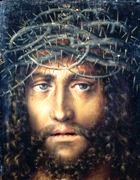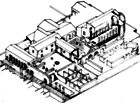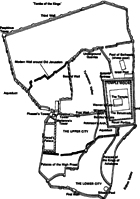Torturing the condemned Jesus
Questions for Bible study groups
- What was the torture of scourging?
- Why did Pontius Pilate have Jesus scourged?
- Why were the soldiers so cruel to a political prisoner?
In brief: Jesus, a Galilean teacher and miracle-worker, was savagely whipped on the orders of Pontius Pilate. Then the soldiers dressed him in purple, put a crown woven from thorns around his head, and mocked him as ‘King of the Jews’.
The Scourging of Jesus
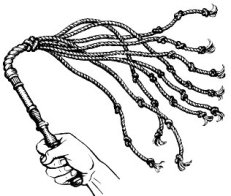 It is fairly clear that Pontius Pilate tried to save Jesus by offering the crowd an unattractive alternative, Barabbas. As we know, this ploy failed.
It is fairly clear that Pontius Pilate tried to save Jesus by offering the crowd an unattractive alternative, Barabbas. As we know, this ploy failed.
Now he tried another. He had Jesus savagely flogged, and then paraded before the crowd in an attempt to gain pity. It was clear to him, and he reasoned it should be clear to the crowd, that this pitiable object before them could not be taken seriously as a king.
Scourging was a brutal punishment, but it was standard practice before a crucifixion. The whip, the flagellum, had several thongs, each one of which had pieces of bone or metal attached. It made a bloody pulp of a man’s body.
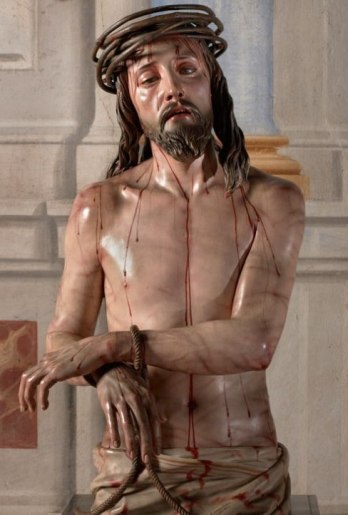
The Man of Sorrows, Pedro de Mena, 1673, carved wooden statue with painted surface
The person to be whipped was stripped of his clothing, tied to a post or pillar, and beaten until his flesh hung in shreds.
There was no maximum number of strokes: the whipping could go on as long as the soldier administering it wished. Men frequently collapsed and died as the result of a flogging. The Jewish historian Josephus says with some pride that he had whipped rebels in Galilee until their entrails showed. The following passage is interesting because it shows what Pilate may have intended when he had Jesus scourged:
‘…And when their leaders came into the house, Josephus drew them to the most private part of the house and shut the door, and then had them whipped till every one of their inward parts appeared naked. In the meantime the multitude stood around the house and supposed that he was having a long discourse with those that were gone in, about what they claimed of him. He then had the doors set open immediately, and sent the men out all bloody, which so terrified those that had before threatened him, that they threw away their arms and ran away.’ Josephus, Wars, Book 2, 21:5
See the blue text at bottom of page for gospel passages
The soldiers mock Jesus
After the soldiers had flogged Jesus, they engaged in some brutal horseplay with their helpless prisoner.
One accusation against Jesus was that he called himself ‘King of the Jews’, so they set about playing out a grotesque charade in which Jesus was a royal king – of sorts.
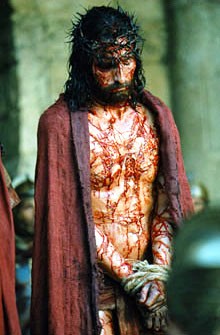 They wove spiky twigs into a rough crown and set it on his head.
They wove spiky twigs into a rough crown and set it on his head.
This is traditionally shown as a crown of thorns, but the Greek word used to describe it in the gospels means a wreath of victory rather than a royal crown – the sort worn by victorious athletes at the ancient Olympic games. A gilded wreath of leaves was also part of the insignia worn by Rome’s vassal kings. The ‘crown of thorns’ may have been meant more as mockery than torture.
Once they had crowned their ‘king’ they draped a cloak around his shoulders, probably the dark red chlamys worn by army officers. This would have been easy for the soldiers to obtain. Purple cloth was extremely expensive, and not likely to have been available to ordinary soldiers.
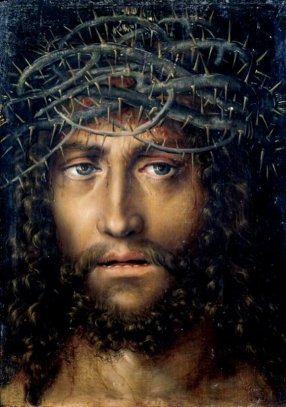
John’s gospel says the soldiers ‘came at’ Jesus. They probably pretended, in a grotesque comedy, that he was a king and they were courtiers coming forward to do obeisance – ‘Hail’ was a normal form of greeting, but it was also used when speaking to royalty, as in ‘Hail, Caesar’.
No doubt there was a great deal of cruel laughter at the expense of their victim, as they hit him with reed canes, mocking his helplessness.
The soldiers were cruel – there is no doubt about that, but they were under extreme pressure. Passover in Jerusalem was a flashpoint during which anything could happen. These men were auxiliary troops, not Romans; they had been recruited to suppress recurrent rebellion in Palestine. Their job was to maintain public order, and maintain it they would.
Their treatment of Jesus was brutal, no doubt of that, but it was probably aimed more at the Jewish populace and their leaders than at the hapless man before them.
See the greentext at bottom of page for gospel passages
What happened next? See Death Sentence
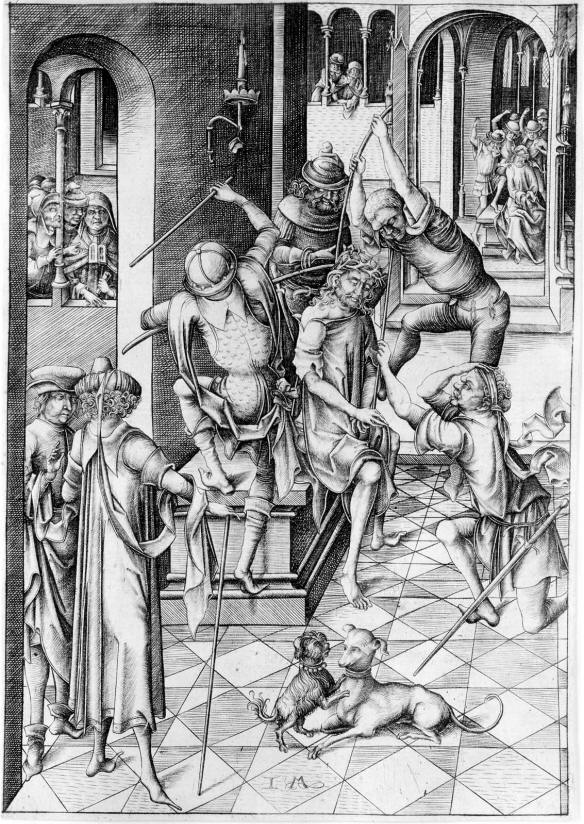
Crowning with Thorns, Ishrahel van Meckenem
Return to top
What the Gospels say
1 The Scourging of Jesus: Read the blue text
2 The soldiers mock Jesus: Read the green text
Matthew 27:26-31
26 Then he released for them Barabbas, and having scourged Jesus, delivered him to be crucified.
27 Then the soldiers of the governor took Jesus into the praetorium, and they gathered the whole battalion before him. 28 And they stripped him and put a scarlet robe upon him, 29 and plaiting a crown of thorns they put it on his head, and put a reed in his right hand. And kneeling before him they mocked him, saying, “Hail, King of the Jews!” 30 And they spat upon him, and took the reed and struck him on the head. 31 And when they had mocked him, they stripped him of the robe, and put his own clothes on him, and led him away to crucify him.
Mark 15:16-20
16 And the soldiers led him away inside the palace (that is, the praetorium); and they called together the whole battalion. 17 And they clothed him in a purple cloak, and plaiting a crown of thorns they put it on him. 18 And they began to salute him, “Hail, King of the Jews!” 19 And they struck his head with a reed, and spat upon him, and they knelt down in homage to him. 20 And when they had mocked him, they stripped him of the purple cloak, and put his own clothes on him. And they led him out to crucify him.
Luke 23:20-22
20 Pilate addressed them once more, desiring to release Jesus; 21 but they shouted out, “Crucify, crucify him!” 22 A third time he said to them, “Why, what evil has he done? I have found in him no crime deserving death; I will therefore have him flogged and release him.”
John 19:1-5
1 Then Pilate took Jesus and scourged him.
2 And the soldiers plaited a crown of thorns, and put it on his head, and arrayed him in a purple robe; 3 they came up to him, saying, “Hail, King of the Jews!” and struck him with their hands. 4 Pilate went out again, and said to them, “See, I am bringing him out to you, that you may know that I find no crime in him.” 5 So Jesus came out, wearing the crown of thorns and the purple robe. Pilate said to them, “Behold the man!”
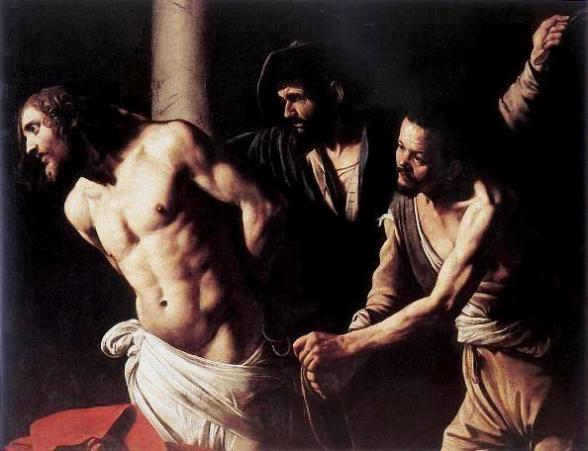
The flagellation of Christ at the column, Caravaggio

